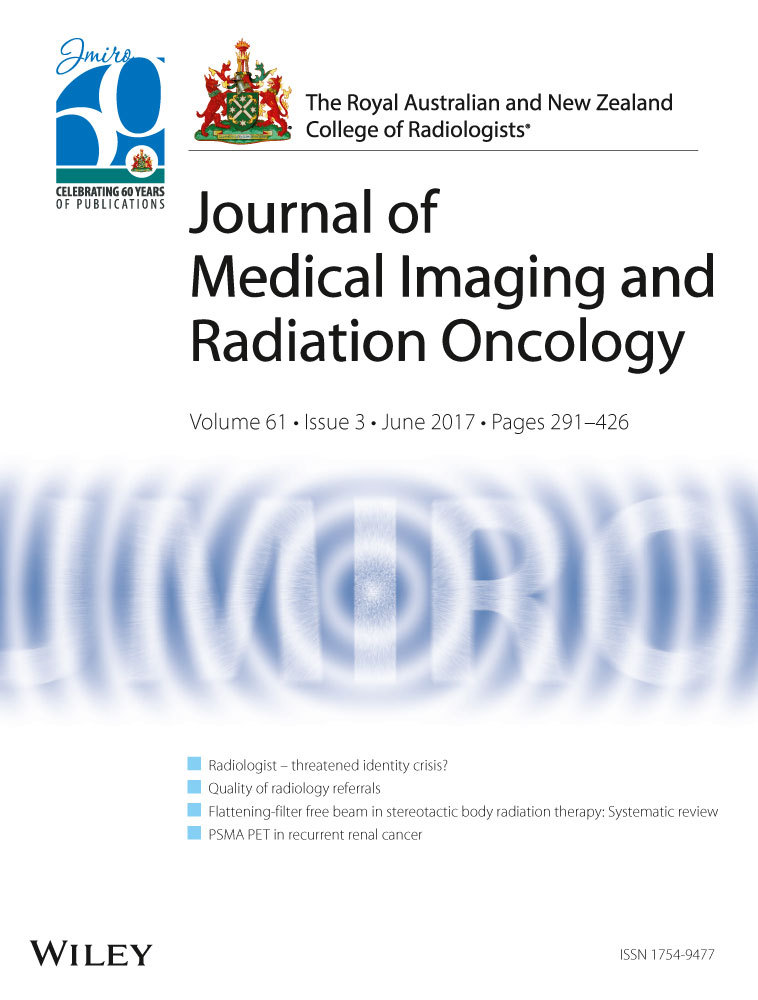Survey of image-guided radiotherapy use in Australia
Abstract
Introduction
This study aimed to evaluate the current use of imaging technologies for planning and delivery of radiotherapy (RT) in Australia.
Methods
An online survey was emailed to all Australian RT centres in August 2015. The survey inquired about imaging practices during planning and treatment delivery processes. Participants were asked about the types of image-guided RT (IGRT) technologies and the disease sites they were used for, reasons for implementation, frequency of imaging and future plans for IGRT use in their department.
Results
The survey was completed by 71% of Australian RT centres. All respondents had access to computed tomography (CT) simulators and regularly co-registered the following scans to the RT: diagnostic CT (50%), diagnostic magnetic resonance imaging (MRI) (95%), planning MRI (34%), planning positron emission tomography (PET) (26%) and diagnostic PET (97%) to aid in tumour delineation. The main reason for in-room IGRT implementation was the use of highly conformal techniques, while the most common reason for under-utilisation was lack of equipment capability. The most commonly used IGRT modalities were kilovoltage (kV) cone-beam CT (CBCT) (97%), kV electronic portal image (EPI) (89%) and megavoltage (MV) EPI (75%). Overall, participants planned to increase IGRT use in planning (33%) and treatment delivery (36%).
Conclusions
IGRT is widely used among Australian RT centres. On the basis of future plans of respondents, the installation of new imaging modalities is expected to increase for both planning and treatment.




